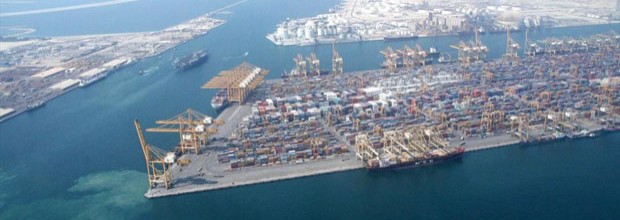
Mariel port grants concessions and licenses
HAVANA – I don’t know if it is the ill-famed secrecy or the lack of training of journalists that has limited the publicity given to something as important to this country as the opening of the Regulatory Office for the Special Development Zone at Mariel (ZEDM, 50 kilometers northwest of the capital), set to begin in November.
The agency’s first objective is to handle all applications for licenses and permits for concessions as diverse as the possibilities being projected for the ZEDM.
Mariel will see the establishment of technological novelties with various purposes, among them industrial, agricultural, service and tourism production enterprises.
Another project is the production of goods and services with added value, which should create jobs mainly (but not exclusively) for the four municipalities of the province of Artemisa, where the megaport is situated.
The first phase of the installation is expected to be operational before the end of 2013. Once at full speed, the port will be capable of mooring deep-draught ships and receive 3 million containers per year.
The local residents –and those in neighboring areas– who work in the ZEDM will have working conditions and salaries different from those in the rest of the island. The nation will benefit from all gains obtained if the plan is successful.
Among the expectations for the enclave –the largest in all of Cuba because of its variety and size (465 Kms. and a vast infrastructure)– is that it will reduce imports, thanks to the industries housed in the zone. This, in turn, is expected to encourage exports.
I don’t know how the government plans to boost exports of island-produced goods. No details have been issued about that, due to official and officious discretion, but I can mention a regulatory framework that was created for the Zone, which has some tax benefits –no payment for utilities for 10 years, for example.
A new law is expected that fosters investments and responds to the transformations in the Cuban economy. For now, the ZEDM will be ruled by a special Law-Decree, passed in September, that reflects international and Cuban procedures.
A resolution by the Ministry of Finance and Prices, published in the Official Gazette, alludes to the manufacture and sale of goods in the domestic market and states that the companies will benefit from the payment of export rights “when this is beneficial to the national economy.”
At the Ninth International Encounter for Foreign Trade and Investment held recently at the National Hotel, with the participation of 300 experts from 12 countries, several formulations were made about the Mariel Development Zone. Because it dealt with the protection of bilateral accords signed by Cuba (about 50), as well as security and risks, I would suppose that some of those accords have to do with the Zone.
Brazil (which is investing $640 million), Russia and China are publicly interested in a project that looks so attractive. Ma Kequiang, an advisor at the Chinese Embassy in Havana, has voiced the interest of investors and entrepreneurs from that Asian giant in the development zones, especially the one in Mariel.
The Chinese diplomat said that trade between his country and Cuba rose to more than $10 billion in the first eight months of this year. This growth represents a 25 percent increase over the same period last year.
Despite the blockade and modernity, Cuba remains the key to the Gulf. Cubans are keeping abreast of the work being done in the Panama Canal to allow the passage of deep-draught ships beginning in 2015. As an intermediate point, Mariel will be able to welcome those ships and move them on to other ports in the Caribbean and South America.
When it comes to impending possibilities, Russia is interested in anything that involves railroad and electrical infrastructure, as well as biotechnology, computer use and communications. Russian entrepreneurs favor the production in Cuba of fiberoptics and leading-edge technologies that they can export to Latin America, among other options.
“Our intention is that the entities that establish themselves [in the Zone] will look for Cuban partners, but even if they are 100 percent foreign we’ll try to adopt their good practices,” said Ana Teresa Igarza, director general of the ZEDM regulatory office. The sectors that are prioritized by the Cuban government, such as biotechnology and pharmaceutics, are first-class, she said.
Broadening the spectrum of alternatives, she said that the proposed scheme contemplates “an agro-alimentary terminal, a multipurpose terminal, and a ‘roll-on-roll-off’ terminal for any vessel that carries rolling cargo, such as cars or trucks.”
Igarza said that the Zone has room for “the agro-alimentary industry, tourism and real estate, containers and packing, agriculture, industry in general, telecommunications and computer use,” not only because of its tax exemption and large warehouses. The creation of industries with foreign capital is encouraged in this commercial and manufacturing pole that grants guarantees to foreign investors and the unfettered remittance of its dividends outside the island.
Two months from now, in January 2014, the first 700 meters of the dock and some of the facilities in this industrial platform will begin to import, produce and sell to national and foreign buyers.
The outlook for this project is for a high probability of success and the ability to transform, as long as it is watched closely from the start and evermore efficient methods are created.
Progreso Semanal/ Weekly authorizes the total or partial reproduction of the articles by our journalists, so long as source and author are identified.


